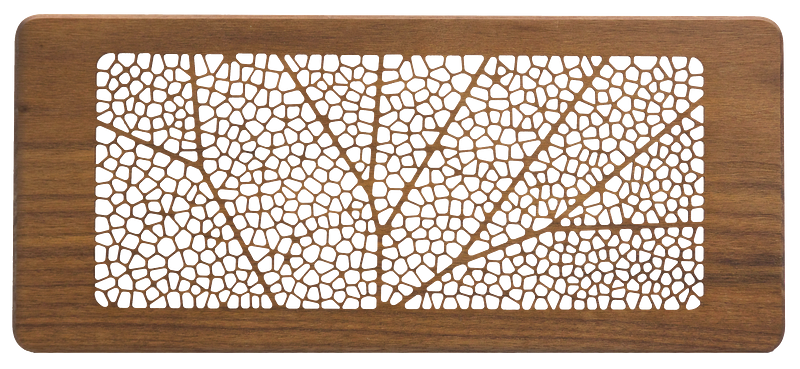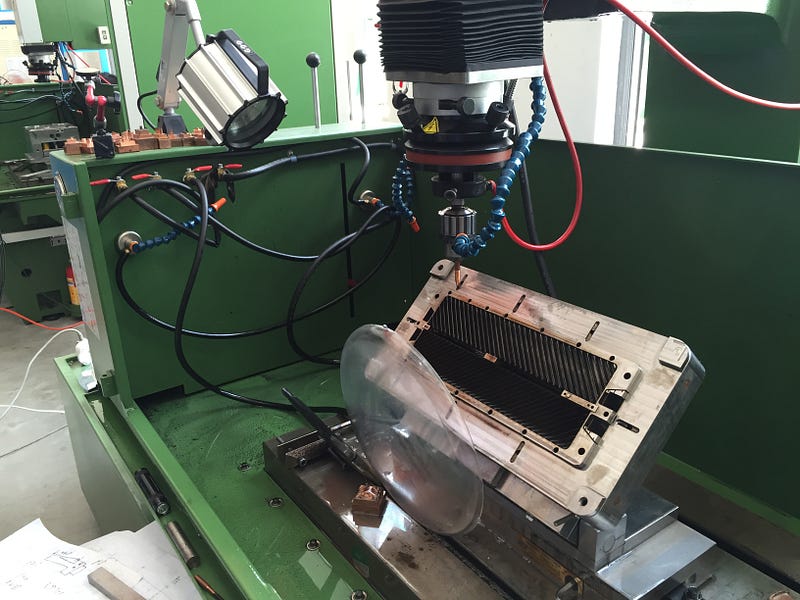
Air vents are typically installed in three locations: the wall, the ceiling, and the floor. That last one requires special consideration. Unlike wall and ceiling vents, depending on where they are installed, floor vents must withstand foot traffic, furniture, and all manner of forceful impact that can put even the most durable vents to the test.
After extensive testing at our factory, the Keen Home hardware team determined that in order for the Smart Vents to truly stand up to any direct impact — such as from a chair leg or an indoor game of capture the flag — we needed to reinforce the faceplates. Our goal was to support 200 lbs from a 2 inch puck.

Initially, we planned to build a steel reinforced version of each faceplate specifically designed for the floor. We quickly realized, however, that we would face two big issues with this strategy:
- Confusing customer experience: We already offer four sizes and two faceplates (with another on the way). Requiring homeowners to choose not only the right size and faceplate, but also whether they want a faceplate for floor, wall, or ceiling use, would open up a lot of room for confusion and error.
- Perceived quality: To use Smart Vents, homeowners must replace their durable-seeming metal dumb vents first. While our plastic Herringbone faceplate were made to be durable from the start, adding metal reinforcement would give them palpable strength that would give quality-conscious homeowners peace of mind.
At this point we were positive that we needed to keep the purchasing experience as simple as possible and to meet (hopefully surpass) homeowners’ expectations of product quality. Having reaffirmed that we could not compromise on these two things, we took a step back and formulated a new strategy.
Instead of creating a whole new faceplate, our new strategy was to optimize our existing ones for floor use. But, as is usually the case in hardware, doing this wasn’t straight forward. Reinforcing the Smart Vent faceplates to be floor ready required significant redesigns, especially to our wooden faceplate, Arbor. Because of its intricate pattern, reinforcing it would not only require re-imagining the way Arbor looked, but would also make manufacturing it more challenging. There needed to be enough interest in floor-rated Arbor for us to make it.

Will McLeod, our Chief Product Officer, led the initiative to design, test, and execute floor-ready Smart Vent covers. With Will in charge, we conducted a survey of everyone who pre-ordered an Arbor faceplate to gauge interest in a floor-rated variety. To our surprise, only a handful of people wanted to use Arbor in high traffic areas where a reinforced faceplate would be required. With this new insight, we decided to leave Arbor as is (for now) and focus on reinforcing Herringbone.
To do this, we started with an FEA (finite element analysis) to find the minimum amount of metal needed for reinforcement. This is an important consideration: steel is expensive and we didn’t want to dramatically impact the cost of each Smart Vent. Once we knew how much metal was needed, we conducted another FEA to adjust the faceplate design in order to maximize airflow.
We went back and forth with the designs, 3D printing and testing models in our test home as we went. We planned to use final materials for the last batch of prototypes, but found that the prototyping shop we were working with wasn’t using the correct process to create the metal. To ensure changing the process wouldn’t impact our delivery time, we ended up designing the faceplate so that it could hold extra weight without a metal reinforcement, but added the reinforcement anyway once the materials process was corrected. We now have a faceplate that can support close to 500 lbs of shoe sized pressure. That’s 300 lbs more than the required 200 lbs requirement.
Despite changing the design of Herringbone faceplate, and building a whole new tool for manufacturing it, we still managed to complete the floor rated faceplate without adversely affecting our delivery timeline.

We attribute our ability to stay on schedule to a few things: access to the right tools, the right people, and the right knowledge. As we demonstrated, you can move fast on last minute changes to hardware so long as you have deep knowledge of manufacturing, materials science, and design, as well as the support of a talented and selfless team that helps make it all a reality.
Herringbone is our first reinforced Smart Vent faceplate for floor use, but we are exploring opportunities to introduce additional floor-rated faceplates sometime in 2016. Wave and Arbor will remain most appropriate for wall and ceiling use, or for floors in areas without high foot traffic. If there is enough interest in making either floor ready, we will. But until then, Herringbone — the literal face of the Smart Vent and the faceplate most people are familiar with — remains our strongest and most versatile faceplate for wall, ceiling and floor use.